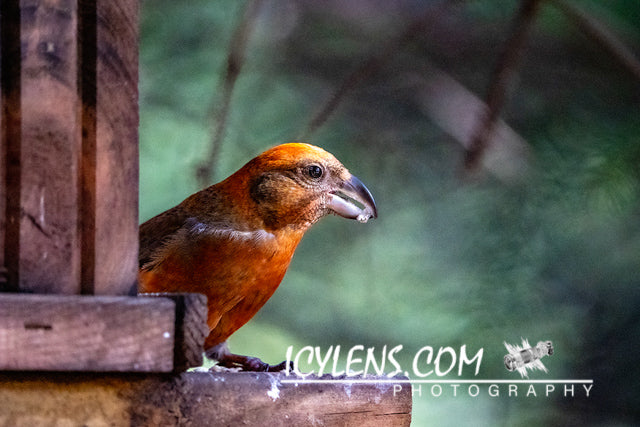My Store
Cross nose - Loxia curviriostra
Cross nose - Loxia curviriostra
Couldn't load pickup availability
Cross nose
Cross nose has the scientific name Loxia curviriostra and belongs to the finch family (Fringillidae).
Scientific name: Loxia curviriostra.
Family: Finch family (Fringillidae).
Characteristics: Crooked beak where the upper and lower parts of the beak alternate. The color of the cross nose makes the bird easily distinguishable from the birds that visit gardens here. Color varies between sexes and young birds. Males are red or orange and females are grey-green or yellow-green. Juveniles are grey-brown in color and more streaked than the female. Wings are grey-brown above and greyish below.
Habitat: Conifers and northern crossbills breed in spruce forests.
Migration: Local birds but migrate if food availability is low. Will wander if there are few seeds, especially if the density is high (lots of cross noses) and low seed production on spruce trees. Many cross noses often come to the country under those conditions. Following one such migration, a cross-nosed pair attempted to nest in 1994, but it failed. In the summer of 2008, a large number of cross noses arrived in the country. Spruce species had a good and abundant seed year, so there was plenty of food. As a result, cross-nosed bats started nesting in forest groves around the country. Young were seen in many places in 2009 and 2010 and a nest was found. With increased forestry and taller conifers, the chances of cross-nosed foxes gaining a foothold here increase.
Breeding season: Very variable, from December to June and its timing depends on food availability.
Food: Spruce seeds are the main food in the Arctic, but also take pine seeds such as e.g. in England. Southern populations live on pine seeds. These birds are specialized seed eaters and the beak is evidence of that, but it is used to get the seeds from the cones. If spruce or pine seeds are not present, cross noses can eat buds of deciduous trees, various fruits and insects. Cross noses can be fed by feeding them sunflower seeds or nuts.
Population size: The population size of the cross nose is unknown but may be several hundred pairs.
Purchasing this photo guarantees you a high-quality, full-size file (around 2-4000 x 4-6000 px) without any watermark, perfect for printing. I value honesty and will not sell this photo to anyone else. Invest in a unique and exclusive piece for your collection.
Share


